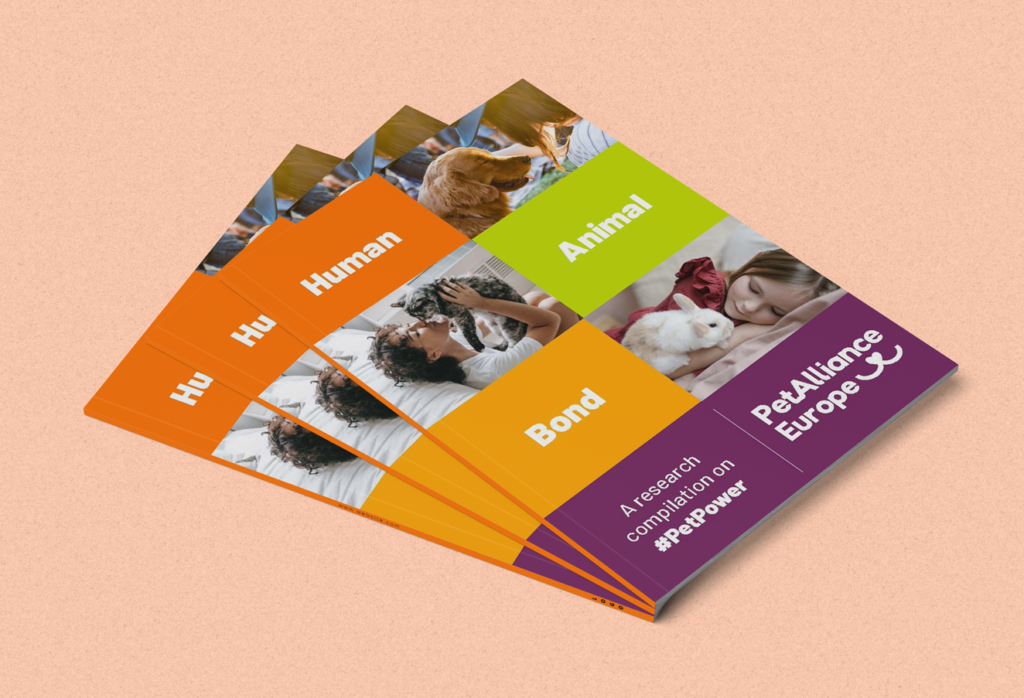
Europe’s New Facts & Figures
Recently released data from one of the Pet Alliance partners, FEDIAF, the European association representing the Pet Food Industry, has confirmed that over 50% of Europeans now benefit from the companionship of a furry friend. This is an amazing figure, very reassuring but perhaps not so surprising for pet lovers at the Pet Alliance!
Europe’s Companion League
Among the diverse array of pets, cats reign supreme in Europe. With a population of 129 million, they are the most popular companion animals, found in 27% of households. Dogs follow closely, with 106 million in 25% of European homes. These numbers reflect the deep affection Europeans have for their furry friends.
In addition to dogs and cats, Europeans share their homes with 52m birds, 30m small mammals, 23m aquaria and 12m terraria who all bring their unique charm and companionship to a household.
Reasons for Ownership
The Pet Alliance is delighted to see that so many Europeans benefit from ownership. We are also not surprised that the benefits are scientifically proven! Here are a few reasons why we choose to add pets to our families:
- Companionship is a key motive as pets bring joy to our lives, provide emotional support and reduce feelings of loneliness. A study conducted among 6000 people during lockdown, investigated links between pet ownership, mental health and loneliness. The results overwhelmingly confirmed that pets helped them cope better. Studies have also looked at the benefits of other animals such as fish and research has shown that they can help improve mood and encourage relaxation.
- Pets encourage physical activity and social interaction. They also contribute to a sense of community. In January 2024, research from the University of Western Australia among 600 children confirmed that girls who have a dog spent almost an hour more being active per day, suggesting dog ownership could help curb childhood obesity. Additionally, a study of 2600 pet owners across Australia and the US confirmed that pet owners were more likely to get to know people in their neighbourhood.

3. Owning a pet also teaches responsibility and instils empathy among children. There is lots of excellent research on the benefits of pets for children. A huge study of 31,453 children in Japan – with 36% owning a pet – confirmed that pet ownership was associated with better emotional expression in later childhood. Pets can also boost chidlren’s positive emotions and reduce anxiety.
A Future with Pets
Overall, pet ownership enriches the lives and enhances the wellbeing of adults and children across Europe. As households continues to embrace the companionship of pets, we are confident that the growing bond between humans and their pets will foster a healthier, happier society.

We know that assistance animals do amazing work helping people in need. But how exactly are they trained to perform so many different tasks? We asked different service dog associations to tell us more about their work and their training processes and put together a quick overview for you!
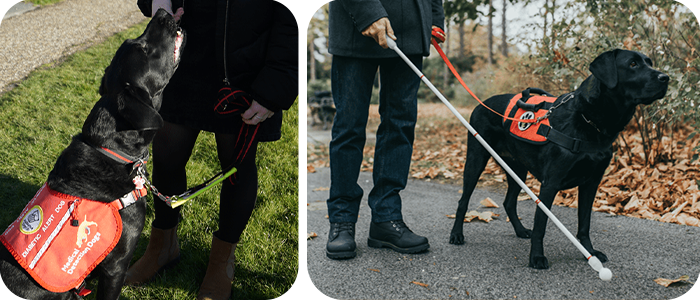
Choosing the puppies
Puppies can be selected to become assistance animals from the age of 2 months. They are chosen according to certain physical characteristics, such as good balance and their personality also plays a key role. Being sociable is really important for a working dog.

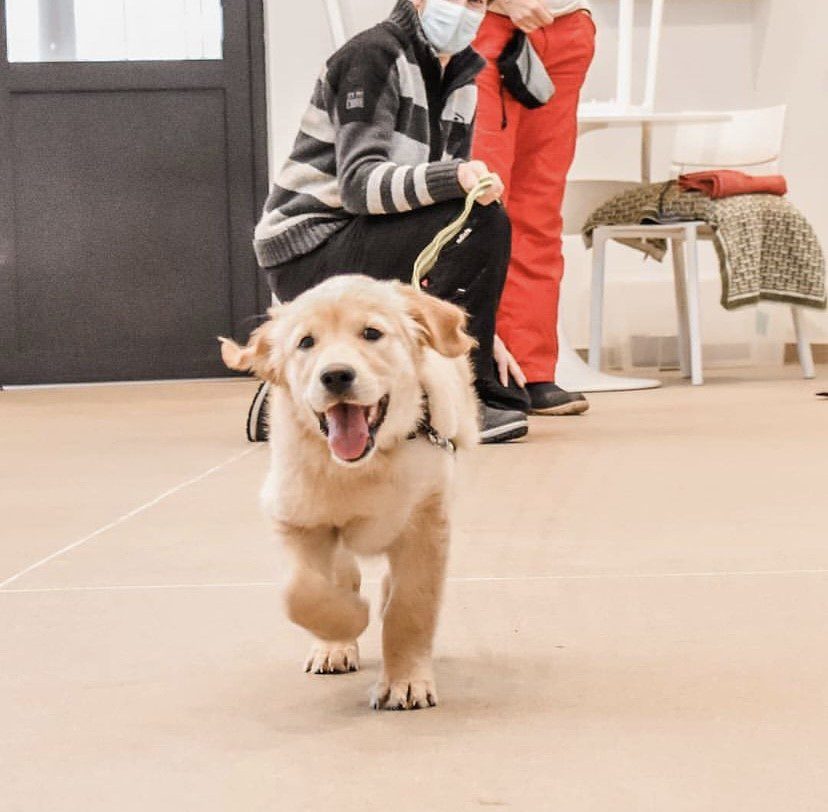
Socialisation
After the initial selection, the puppies are placed with foster families to be socialised. This is a very important part of the process and, the socialiser needs to get out and about quite regularly with their dog! (Who said the perfect job doesn’t exist?) The puppy needs to be introduced to all kinds of different situations they could potentially encounter while working, such as walking through parks or shopping areas, meeting new people and even taking public transport. The first year of a puppy’s life is all about learning — learning basic skills, learning to be a confident, well-socialised dog who is not easily distracted, learning to feel loved and needed. The pups also receive all the veterinary care necessary, including vaccination and parasite control, making sure they grow into healthy and happy dogs.

Training
From 18 months old dogs can start their more formal training process. The tasks and commands the dog will learn varies according to which type of assistance they will provide. For example, a diabetes alert dog will learn to alert their owner of an impending hypo before they are aware of it and retrieve their glucose testing kit. The training process can take from 6 months to a year, depending on the dog’s personality and behaviour and how quickly they pick up the tasks. Trainers can spend hundreds of hours transforming puppies into fully-qualified assistance dogs!
Meeting their people
After they graduate from assistance dog training school, they are ready to enter into and essentially change the lives of their new owners! The associations training assistance dogs will look at their sometimes long waiting list of people requiring assistance and match the newly-trained dog with the person they are best equipped to assist. Sometimes the dog will ‘try on’ a few people until the perfect match is made.
Follow up
After placement, the training association will continue to monitor the dog through regular catch-ups to ensure they are healthy and happy in their new home. They can also provide further support if additional training or education is required. All these important steps help to ensure pawfect partnerships 😉
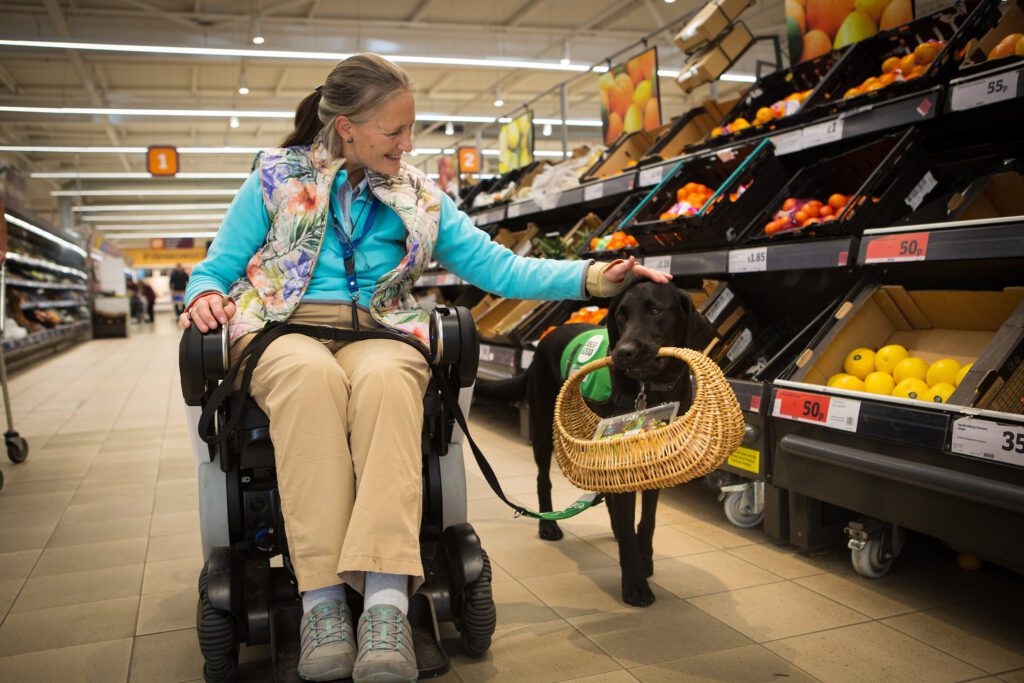
We all know that an animal companion comes with many benefits. Those benefits can be felt even more strongly by those who need it! Senior citizens, particularly those living alone, sometimes look for companionship or a reason to take a walk outside every day, and that’s where our beloved furry friends come in.
But we must never forget that every animal has their needs and it’s important to ensure that those will be able to be met as people get older.
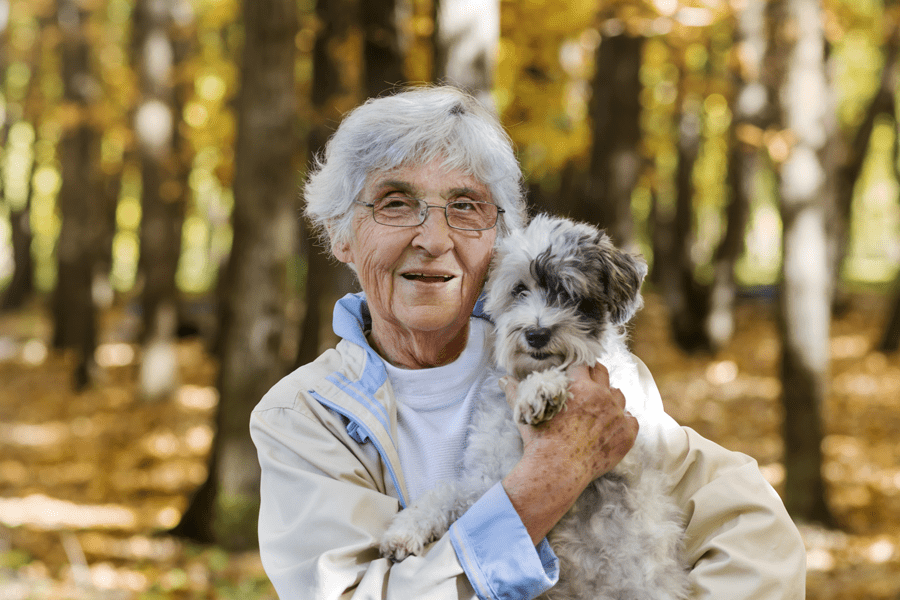
Having a dog
Different dogs need different levels of exercise but smaller breeds are often a great choice for older people as they are easier to handle and safer to take walks with. Small dogs also do well in smaller homes and do not require big outdoor spaces to get enough exercise.
A UK study showed that owning a dog motivates older adults to be more active, supporting healthy aging and improving their quality of life.
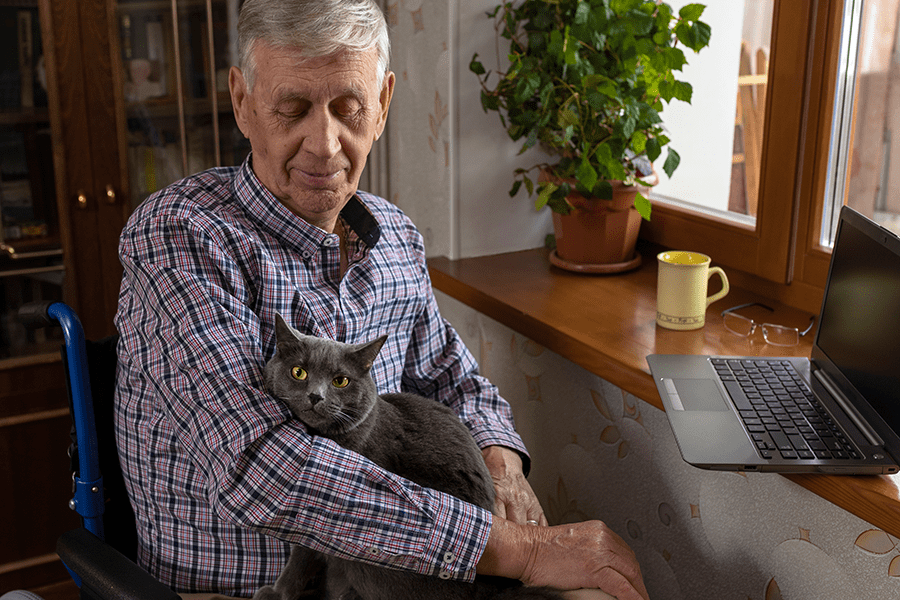
Having a cat
If an older person no longer enjoys the same level of mobility or strength as during their youth for the daily walks required by a dog, but are still looking for a furry friend to care and love, a cat is a great option!
Cats are typically very independent animals and do not need to be walked or taken outside to use the bathroom. But they’ll still provide boundless love and companionship for anyone living alone!
A Dutch/Swiss review of studies showed that pets provide feelings of being protected and safe for elderly pet owners.
Having fish
While having a large aquarium requires a lot of work, a small one can be both colourful and fun to have in the home. Small freshwater fish can make good pet options for older people. Once the aquarium is set up to meet the fish needs, the care of a fish is fairly minimal, especially with the use of automated feeders, water filters and testing kits.
A study from Poland suggested that interacting with fish in aquariums has the potential to benefit human well-being.

Having a bird
Birds can make great companions with their beautiful colours and singing abilities. But it’s important to consider a few things before getting one: the size of the cage they need, the food required, the noise level of the bird, and the time and attention each species needs. Since their respiratory systems are delicate, then a bird might not be the right fit for you if you are a smoker. A London study showed that birds can improve people’s mood!
January is ‘walk your dog month’ and at Pet Alliance Europe we thought it would be a good idea to remind our readers of the huge advantages associated with getting out and about with a pet. There are obvious benefits for your physical health but also for your mental health. Hanging out with pets keeps your body – and your brain – active!

Exercising with pets benefits our health
It’s well documented that dog owners enjoy the health benefits of more frequent walking than those without a dog. The odds of dog owners meeting physical activity recommendations are four times greater than for non-dog owners. Older dog owners benefit from an additional and significant 22 minutes per day.
The specific health gains of this additional exercise vary from owner to owner. However, we know there are well-reported cardiovascular benefits. A survey of almost 11,000 people in the US linked pet ownership (especially dogs) to increased physical activity and improved outcomes after major cardiovascular events. Another massive study of 3.4 million people in Sweden found that dog ownership had a dramatic effect on people who live alone, cutting the risk of death from cardiovascular disease by 36%. In households with more people, the presence of a dog was still linked to lowered deaths from heart disease (15%).
The routine of getting outside for fresh air also has a positive impact on your mental health. Physical activity releases endorphins in the brain that energise you and create positive feelings. It reduces stress, boosts your mood, and increases mental energy. When you add in the companionship of a playful dog, it’s even better!
The company of a dog on walks has been shown to boost social interaction and confidence. One study among 80 adult strangers showed that the presence of a dog encouraged friendly behaviour when the pet owner asked for help.
All kinds of pet interactions count
However, the rewards of pet interaction are not limited to dog walking. Spending time playing with your cat or hamster, watching fish in an aquarium or wild birds feeding – have all been linked to improved mental health. Studies show that pets in general make us feel more relaxed, reducing depression and loneliness. To read more about the health benefits, see our booklet, which summarises huge amounts of research in this area.
Pets need exercise too
Having talked about your physical and mental health, we should also remember how important it is for your pets to get the right amount of exercise. Research among vets suggests that obesity is a big problem with 51% of dogs, 44% of cats and 29% of small mammals classed as overweight or obese.
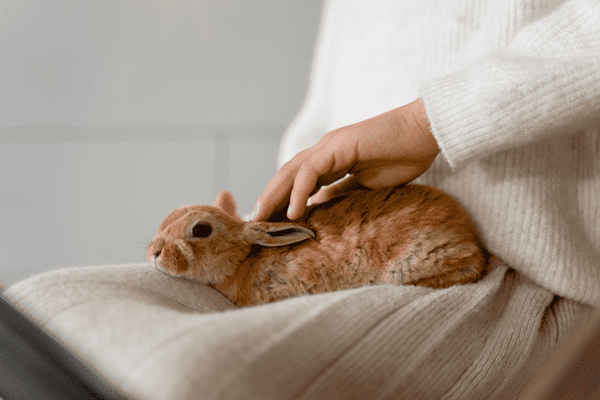
Overfeeding, unsuitable table scraps and insufficient exercise are the major causes of overweight pets. In the same way that excess weight can cause us additional problems, pets can suffer too. Pet obesity can contribute to health issues such as arthritis, heart disease and cancer. Sadly, it can also shorten their lifespan.
Exercise is important to keep your pet content and to strengthen the bond between the owner and the pet too. Whatever activity you choose to practice with your pet, remember that the type and amount of exercise should be tailored according to the individual pet.
This year, we hope that as many of you as possible can get out and about – or invest more time interacting – with your pets. In addition to boosting your physical and mental health, it will keep your pets stay healthy and happy too.
Today is Blue Monday, which has been dubbed as the gloomiest day of the year. While the scientific proof of this recurrence is arguably debatable, it is a valuable opportunity to share awareness on mental health issues. This is especially true considering the toll on mental health that Covid-19 and its consequences have caused on many people. However, research has shown that companion animals are valuable assets to alleviate mental health issues.
So, can the benefits of the human-animal bond or #PetPower help brighten this Blue Monday?
Blue Monday
Taking place every year on the third Monday of January, Blue Monday is allegedly the saddest day of the year. The term was first coined in 2005 by Dr Cliff Arnall and is purported to be based on an equation including various factors such as average temperature, days since the last payday, days until the next bank holiday, average hours of daylight, and the number of nights in during the month. Despite originally being conceived as a marketing tool to encourage people to book holidays, the term has since gained popularity and moved into common parlance, particularly as mental health awareness grows.

Mental Health Issues and Covid-19
Such awareness days have arguably offered a valuable opportunity to shed light on the issue of mental health, especially after the Covid-19 Pandemic. Researchers believe that the pandemic and its consequences, such as lockdowns, have clearly harmed people’s mental health.
To understand the impact of the virus on mental health, a study collected data from 200,000 European citizens. Thanks to the collaborative network COVID-Minds, scientists gathered and analysed these data from four different countries (Denmark, France, the Netherlands, and the UK) between spring and early summer of 2020. This project focused on mental health factors, such as anxiety and loneliness, since psychological stress is a risk factor for long-term and severe mental illness. The study results revealed that the highest levels of loneliness were observed among young people and people with pre-existing mental illnesses.
Covid-19 isn’t the only thing causing challenges, seasonal affective disorder (SAD) can also play a role at this time of year. SAD is “a type of depression characterised by its recurrent seasonal pattern, with symptoms lasting about 4 to 5 months per year“. This mental health issue is especially common when winter starts, and people begin feeling blue as the days become shorter and there is less light.
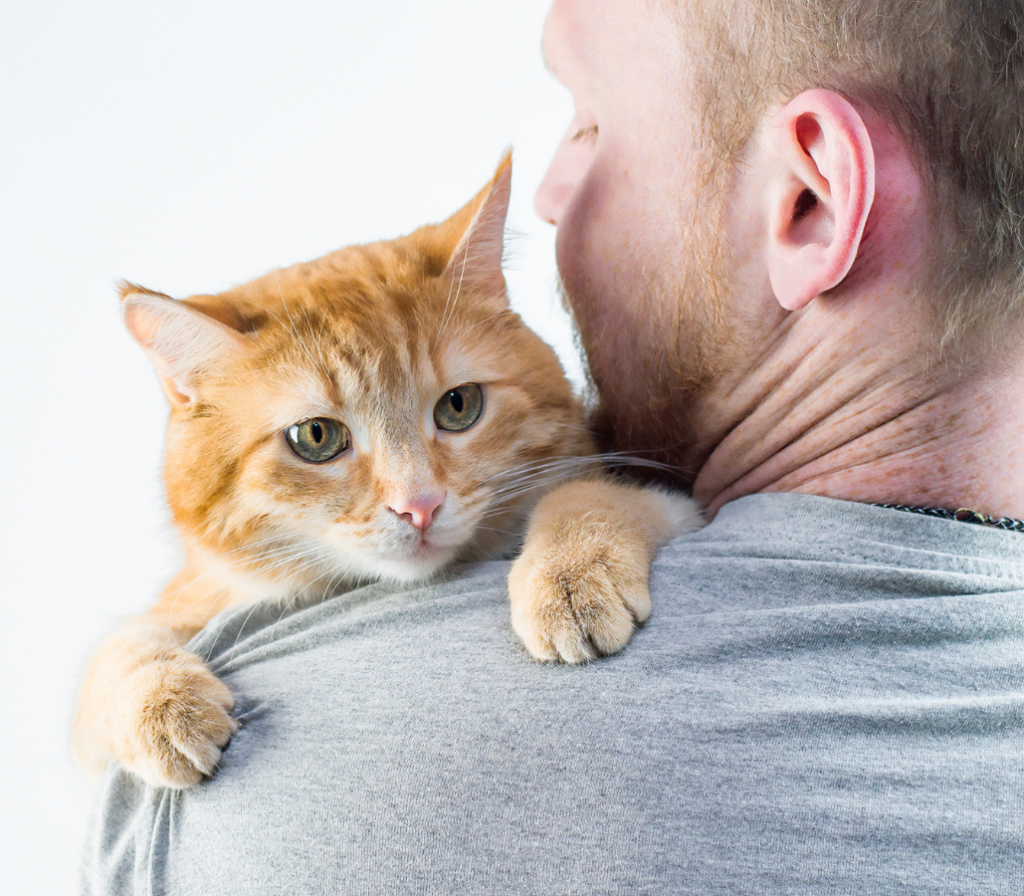
The Mental Health Benefits of Owning a Pet
To fight the gloominess of Blue Monday, some people turn to pet therapy. In 2019 for example, pop-up puppy parks took over the entrances of six office buildings in Toronto, Canada. The Centre for Addiction and Mental Health (CAMH) organised this initiative, with a view to uplifting the spirits of office workers in downtown Toronto through some puppy power! The event was a success, and it also helped spread awareness about mental health issues.
The human-animal bond offers potential benefits for mental health issues. #PetPower can create favourable emotional, psychological, and physical interactions between people and animals that positively shape societies and communities. And this is not just anecdotal information, as many peer-reviewed studies have confirmed several benefits created by the human-animal bond.
We highlight key findings from four of these studies in our booklet:
- A UK review of studies showed that pets provided calming support and were perceived to have a sense of when they were needed.
- An Austrian paper highlighted the potential for dogs to boost self-esteem and act as excellent social lubricants by connecting people.
- Companion animals were also reported to alleviate loneliness in a study conducted in the Netherlands.
- A British study demonstrated that pets constitute a valuable source of support for managing feelings by offering a distraction from symptoms of illness and upsetting experiences.
Clearly, companion animals can help lessen negative feelings and brighten up your mood. #PetPower should definitely be considered a valuable asset to fight the gloominess of Blue Monday as well as mental health issues.
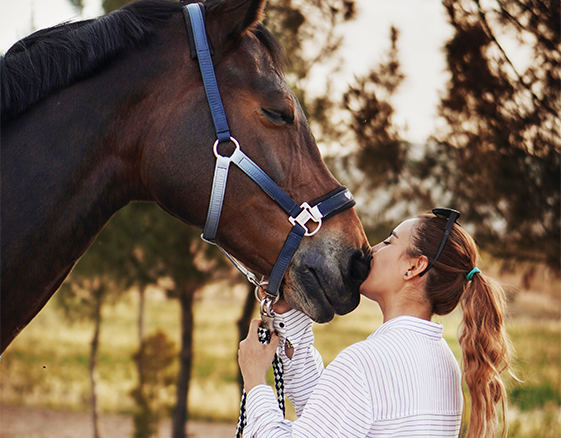
The Pet Alliance Europe booklet on #PetPower is a brief compilation of the human-animal bond research carried out by European scientists. In it we introduce our concept of #PetPower, explaining what it means and highlighting some of the benefits that interactions between pets and people create for individuals and society at large.
Scientific research highlights the benefits of the human-animal bond, and findings to date confirm the significant social and societal potential that this bond offers. One aspect that #PetPower affects positively is physical health. Research has shown that pet ownership can lead to higher activity levels, reduction of feelings of depression in cancer patients, lower risk of heart attack recurrence and much more. Furthermore, our mental health can also draw benefits from having a pet in our home, as studies reveal that companion animals can alleviate loneliness, provide calming support, boost self-esteem and connect people who feel socially isolated. Child development is also positively affected. Interactions with pets can help facilitate language acquisition and potentially enhance verbal skills in children. Finally, #PetPower can play a role in healthy ageing. Studies highlight that an animal presence can reduce behavioural disturbances in people with dementia and stimulate increased rates of social contact amongst older adults.
Given this wide range of benefits, Pet Alliance Europe believes that investigating the benefits of the human-animal bond would be an important focus area for Horizon Europe research funding projects.
